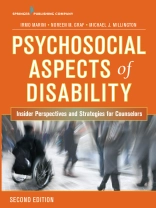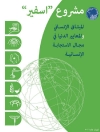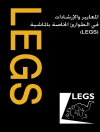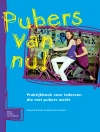Praise for the First Edition:
‘This is an excellent book, but the best parts are the stories of the disabled, which give readers insights into their struggles and triumphs.’ Score: 94, 4 Stars–-Doody’s Medical Reviews
What are the differences between individuals with disabilities who flourish as opposed to those who never really adjust after a trauma? How do those born with a disability differ from individuals who acquire one later in life? Fully updated and revised, this second edition of a unique rehabilitation counseling text reflects growing disparities among ‘haves and have-nots’ as they bear on the psychosocial aspects of disability. New content focuses on returning veterans afflicted with physical and mental health problems, persons with disabilities living in poverty, and the need for increased family and community-based engagement. The book provides updated information about assisted suicide, genetic testing, new legislation, and much more.
Using a minority model perspective, the text provides students and practitioners of rehabilitation and mental health counseling with vivid insight into the experience of living with a disability. It features first-person narratives from people living with a variety of disabling conditions, which are integrated with sociological and societal perspectives toward disability, and strategies for counseling such individuals. The text encompasses an historical perspective, psychological and sociological research, cultural variants regarding disability, myths and misconceptions, the attitudes of special interest and occupational groups, the use positive psychology, and adjustments to disability by the individual and family. A wealth of counseling guidelines and useful strategies are geared to individuals with specific disabilities. Designed for a 15-week semester, the book also includes thought-provoking discussion questions and exercises, an Instructor’s Manual and Power Points.
New to the Second Edition:
- Reflects the growing disparities between “haves and have-nots” as they impact people with disabilities
- Includes new content on veterans with physical and mental disabilities
- Describes the experience of impoverished individuals with disabilities
- Examines the need for increase family and community-based engagement
- Discusses strengths and weaknesses of the Americans with Disabilities Act
- Covers assisted suicide, genetic testing, and recent legislation Expanded coverage of sexual identity
- Provides an Instructor Manual and Power Points
Key Features:
- Provides 16 personal narratives demonstrating the ‘normalcy’ of individuals with different types of disabling conditions
- Includes stories of people living with blindness, hearing impairments, spinal chord injuries, muscular dystrophy, mental illness, and other disabilities
- Delivers counseling strategies geared toward specific disabilities, with ‘do’s’ and ‘don’ts’
- Discusses ongoing treatment issues and ethical dilemmas for rehabilitation counselors
विषयसूची
Foreword
Preface
Acknowledgments
PART ONE: DISABILITY FROM A SOCIOLOGICAL PERSPECTIVE
1. The History of Treatment Toward Persons With Disabilities Irmo Marini
Insider Perspective:The Story of Patricia E. Moniot
Discussion Questions and Exercises
2. Societal Attitudes and Myths About Disability: Improving the Social Consciousness Irmo Marini
Insider Perspective: The Story of Linda Napolitano
Discussion Questions and Exercises3. Culturally Different Issues and Attitudes Toward Disability Michael Jay Millington Insider Perspective: The Story of Elvia Susana Prieto Armendariz Discussion Questions and Exercises
4. Attitudes Toward Disability by Special Interests and Occupational Groups Irmo Marini
Insider Perspective: The Story of Miriam Kimmelman
Discussion Questions and ExercisesPART TWO: THE PSYCHOLOGY OF DISABILITY SURROUNDING THE INDIVIDUAL AND FAMILY
5. Theories of Adjustment and Adaptation to Disability Irmo Marini
Insider Perspective: The Story of Michael Hoenig
Discussion Questions and Exercises
6. Family Adaptation Across Cultures Toward a Loved One Who Is Disabled Noreen M. Glover-Graf
Insider Perspective: The Story of Francia Malone
Discussion Questions and Exercises7. Sexuality and Disability Noreen M. Glover-Graf
Insider Perspective: The Story of Jennifer L. Addis
Discussion Questions and Exercises
8. The Psychosocial World of the Injured Worker Irmo Marini
Insider Perspective: The Story of Gino Sonego
Discussion Questions and Exercises
PART THREE: PERTINENT TOPICS CONCERNING PSYCHOSOCIAL ISSUES OF DISABILITY
9. Disability and Quality of Life Over the Life Span Noreen M. Glover-Graf
Insider Perspective: The Story of Richard Daggett
Discussion Questions and Exercises
10. Implications of Social Support and Caregiving for Loved Ones With a Disability Irmo Marini
Insider Perspective: The Story of Verne Sanford
Discussion Questions and Exercises
11. Social Justice, Oppression, and Disability: Counseling Those Most in Need. Irmo Marini
Insider Perspective: The Story of Claudia Smith composed by Olivia Perez
2. Thriving Versus Succumbing to Disability: Psychosocial Factors and Positive Psychology Irmo Marini
Insider Perspective:Story of Dave Shannon
Discussion Questions and ExercisesPART FOUR: COUNSELING STRATEGIES AND INSIGHTS FOR WORKING WITH PERSONS WITH DISABILITIES
13. Which Counseling Theories and Techniques Work Best With Different Disability Populations and Why Michael Jay Millington
Insider Perspective: The Story of Kristine Stebler
Discussion Questions and Exercises14. Counseling Families in the Community Michael Jay Millington
Insider Perspective: The Story of Kathleen Prime
Discussion Questions and Exercises
15. Ethical Responsibilities in Working With Persons With Disabilities and Our Duty to Educate Noreen M. Glover-Graf
Insider Perspective:The Story of Patricia (Allen) Konczynski
Discussion Questions and Exercises16. Basic Do’s and Don’ts in Counseling Persons With Disabilities Michael Jay Millington
Insider Perspective: The Story of Michael Hineberg
Discussion Questions and Exercises
Index
लेखक के बारे में
Michael J. Millington, Ph D is Course Director for the Rehabilitation Counselling Discipline and Associate of the Centre for Disability Research and Policy, and the WHO Collaborating Centre at the Faculty of Health Sciences, University of Sydney.











